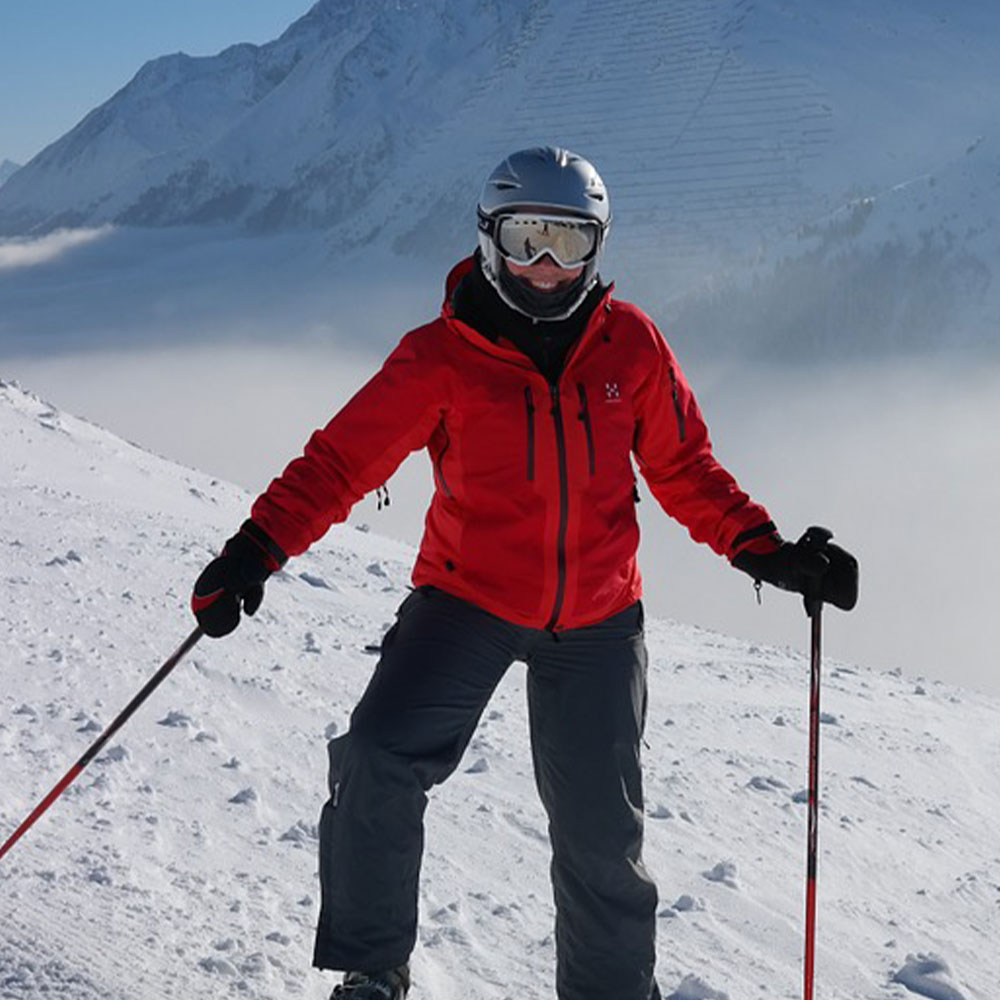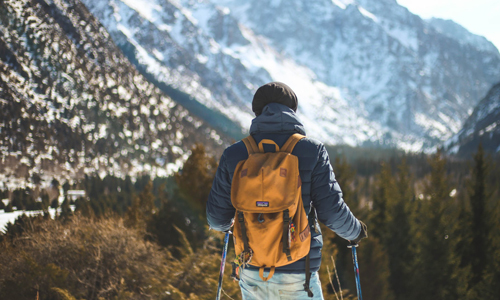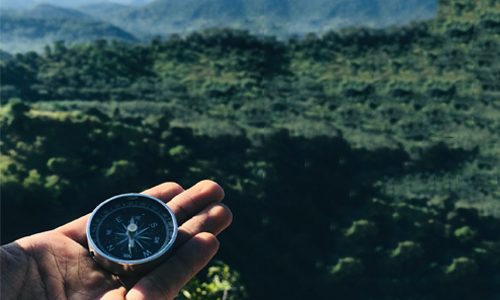How To Avoid Accidents During Your Mountain Trip
Author

A keen runner, skier and nuts about cycling. Karl lives in Cumbria, where he loves encouraging his two children to follow in his outdoor lifestyle. Whilst out and about keeping active, Karl keeps a diary and shares it with Outdoor Look.
Avoiding accidents or unwanted incidents during the trip to the mountains should be the top priority of any mountaineer. If you are planning to go mountaineering or on a hiking trip then you should be aware of the dangers and how to avoid them. This blog will help you get to know about the things that can go wrong and how to avoid them from having a safe and cheerful trip.
Have Prior Knowledge of Weather
The weather in the mountains is ever changing and the most reliable forecast of the mountain weather can come from the Met Office and MWIS.  Pack your kit bag according to this forecast and have all the necessary safety gears along with you. Always plan your route and days of the trip in such a way that you don’t get caught up in the bad weather. For example, wind speeds in the summer season can get really high during your hike. If you find that wind speeds are touching anywhere near the 30mph in the forecast then you should avoid travelling to the narrow ridges to prevent yourself from getting blown away. If winds are above 60mph, avoid your whole trip altogether.
Pack your kit bag according to this forecast and have all the necessary safety gears along with you. Always plan your route and days of the trip in such a way that you don’t get caught up in the bad weather. For example, wind speeds in the summer season can get really high during your hike. If you find that wind speeds are touching anywhere near the 30mph in the forecast then you should avoid travelling to the narrow ridges to prevent yourself from getting blown away. If winds are above 60mph, avoid your whole trip altogether.
Navigating Safely in the Mountain
We all are used to our traditional ways of navigation while travelling. Using the satellite navigation of car, Google Maps on our phone or using Street maps is easy in a normal environment. However, when you are in the mountains, challenging weather conditions in the mountains can make you commit navigation error that can cause you to get stranded in the wrong trail.  The ability to use a mountain map along with using a compass becomes a key point in navigating safely in the mountains. Along with these, get a grasp on route planning, identifying route in difficult weather or low visibility. Always try keeping a note of your trail with your family or friends at the base camp and try being in contact with them or inform them about where you are in your way. This will help people in rescuing you in case of any mishaps.
The ability to use a mountain map along with using a compass becomes a key point in navigating safely in the mountains. Along with these, get a grasp on route planning, identifying route in difficult weather or low visibility. Always try keeping a note of your trail with your family or friends at the base camp and try being in contact with them or inform them about where you are in your way. This will help people in rescuing you in case of any mishaps.
Have a Basic Kit Ready
A simple kit for people going into the hills in summers should consist of a 30-40 litres Rucksack, waterproof jacket, waterproof trousers, high-quality boots and socks for preventing unwanted injuries and making the walk more comfortable, torch with spare batteries, sunblock compass, personal safety aids and medicines. Make sure your kit contains all the necessary equipment to tackle the ever changing weather of the mountain. Having the right set of equipment can prevent injuries and will also help you endure tough conditions if the weather gets worse or you get stranded away from your path and wait for the rescue team to save you.
If you are following the above tips, you will be able to avoid accidents or getting caught in bad weather but still, you should always have a rescue plan ready for keeping you safe. You can call 999 and ask for rescue in the mountains in case of any unwanted incident. Always keep your team members and family informed about the trail you are taking, the weather conditions and if possible tell them your locations when on the way. If there is no network coverage for your phone then try keeping a satellite phone with you for emergencies. These things will help the rescue team find you or get you immediate help. With this knowledge of basic know-how, you are good to go on your summer hiking trail to the hills.
Author

A keen runner, skier and nuts about cycling. Karl lives in Cumbria, where he loves encouraging his two children to follow in his outdoor lifestyle. Whilst out and about keeping active, Karl keeps a diary and shares it with Outdoor Look.
Categories
- Sport (28)
- Product Reviews (3)
- Team Outdoor Look (7)
- Mike Wild (2)
- Mike Payton (2)
- Suse Hammond-Pears (3)
- Snowboarding (12)
- Latest Offers (105)
- Shop Talk (1)
- Competitions (7)
- Walking (413)
- Lifestyle Fashion (8)
- Travel (86)
- Kit Guides (176)
- Workwear Clothing (6)
- Safety Workwear (4)
- Health/Fitness (288)
- Skiing (91)
- Great Outdoors (1315)
- Cycling (92)
- January 2025
- December 2024
- November 2024
- October 2024
- September 2024
- August 2024
- July 2024
- June 2024
- May 2024
- April 2024
- March 2024
- February 2024
- January 2024
- December 2023
- November 2023
- October 2023
- September 2023
- August 2023
- July 2023
- June 2023
- May 2023
- April 2023
- March 2023
- February 2023
- January 2023
- December 2022
- November 2022
- October 2022
- September 2022
- August 2022
- July 2022
- June 2022
- May 2022
- April 2022
- March 2022
- February 2022
- January 2022
- December 2021
- November 2021
- October 2021
- September 2021
- August 2021
- July 2021
- June 2021
- May 2021
- April 2021
- March 2021
- February 2021
- January 2021
- December 2020
- November 2020
- October 2020
- September 2020
- August 2020
- July 2020
- June 2020
- May 2020
- April 2020
- March 2020
- February 2020
- January 2020
- December 2019
- November 2019
- October 2019
- September 2019
- August 2019
- July 2019
- June 2019
- May 2019
- April 2019
- March 2019
- February 2019
- January 2019
- December 2018
- November 2018
- October 2018
- September 2018
- August 2018
- July 2018
- June 2018
- May 2018
- April 2018
- March 2018
- February 2018
- January 2018
- December 2017
- November 2017
- October 2017
- September 2017
- August 2017
- July 2017
- June 2017
- May 2017
- April 2017
- March 2017
- February 2017
- January 2017
- December 2016
- November 2016
- October 2016
- September 2016
- August 2016
- July 2016
- June 2016
- May 2016
- April 2016
- March 2016
- February 2016
- January 2016
- December 2015
- November 2015
- October 2015
- September 2015
- August 2015
- July 2015
- June 2015
- May 2015
- April 2015
- March 2015
- February 2015
- January 2015
- December 2014
- November 2014
- October 2014
- September 2014
- August 2014
- July 2014
- June 2014
- May 2014
- April 2014
- March 2014
- February 2014
- January 2014
- December 2013
- November 2013
- October 2013
- September 2013
- August 2013
- July 2013
- June 2013
- May 2013
- April 2013
- March 2013
- February 2013
- January 2013
- December 2012
- November 2012
- October 2012
- September 2012
- August 2012
- July 2012
- June 2012
- May 2012
- April 2012
- March 2012
- February 2012
- January 2012
- December 2011
- November 2011
- October 2011
- September 2011
- August 2011
- May 2010
- April 2010
- March 2010
- February 2010
- January 2010
- November 2009
- October 2009
- September 2009
Submit a Comment